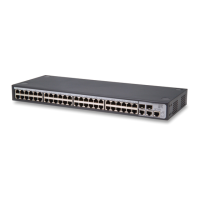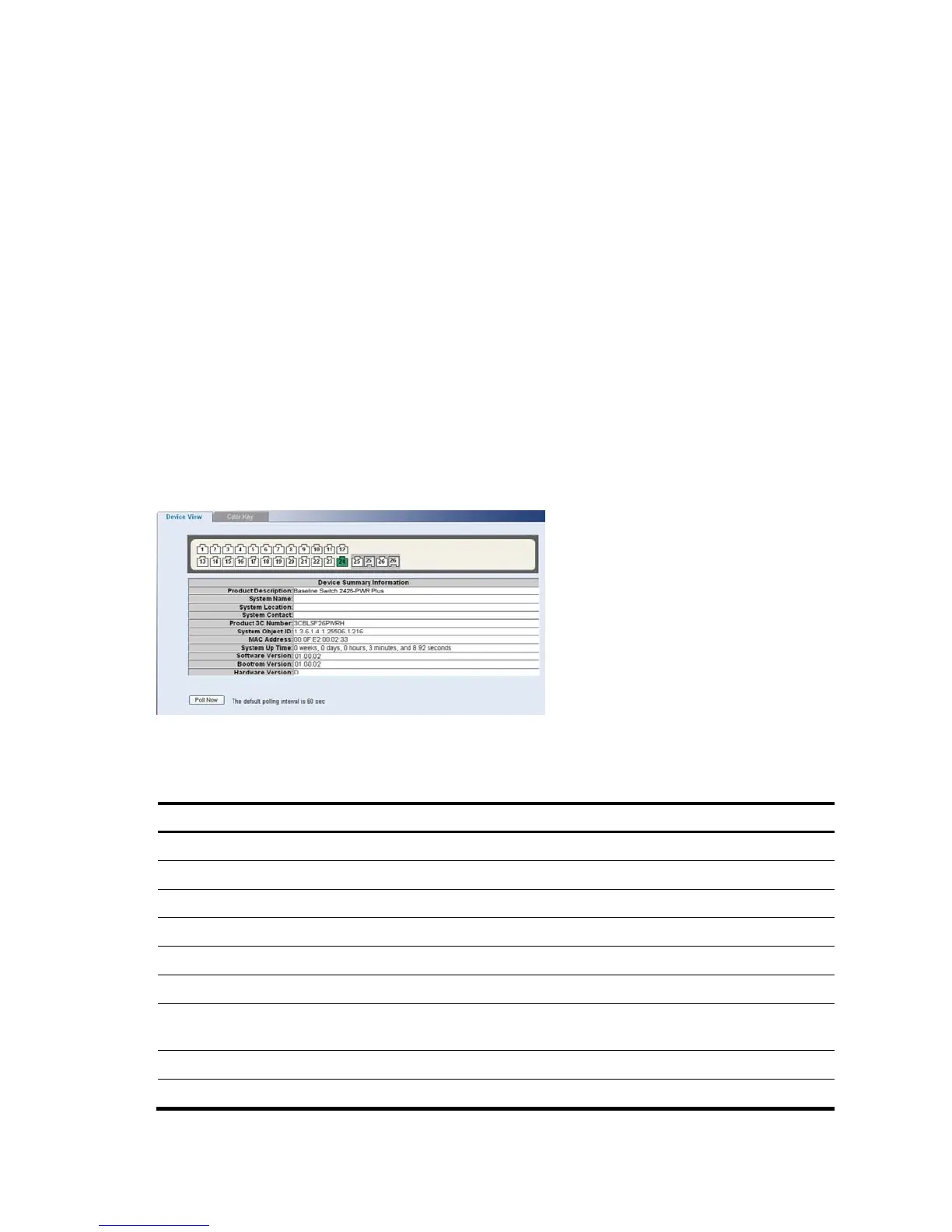

Do you have a question about the HP V1905 Series and is the answer not in the manual?
| Model | HP V1905 Series |
|---|---|
| VLAN Support | No |
| QoS | No |
| Management | Unmanaged |
| Jumbo Frame Support | No |
| Type | Unmanaged |
| Ports | 8, 16, 24, or 48 ports |
| Uplink Ports | Gigabit uplink ports |
| MAC Address Table Size | 4K entries |
| Power Consumption | Varies by model |
| Dimensions | Varies by model |
| Weight | Varies by model |
| Operating Temperature | 0°C to 40°C |
| Operating Humidity | 10% to 90% non-condensing |
Provides a general description of the HP V1905 switch series, its capabilities, and intended use.
Details the key hardware specifications and features supported by the switch.
Illustrates and describes the components visible on the front panel of the switch.
Explains the meaning of various LED indicators on the switch front panel.
Lists the technical specifications for different HP V1905 switch models.
Provides essential preliminary steps and safety precautions before installing the switch.
Offers guidance on selecting an optimal location for the switch.
Explains how to mount the switch in a rack or place it as a free-standing unit.
Details the procedure for connecting and powering on the switch.
Describes how to verify the switch is functioning correctly after initial power-up.
Guides on inserting and using SFP transceivers for network connectivity.
Outlines routine checks to ensure the switch is operating optimally.
Lists the necessary prerequisites for connecting to the switch's web management interface.
Recommends compatible web browsers for accessing the switch interface.
Provides the default login credentials for accessing the switch's web interface.
Step-by-step instructions on how to log into the switch's web interface.
Explains the layout and basic navigation within the switch's web interface.
Details how to set up user accounts, passwords, and access levels for managing the switch.
Covers the configuration of IP addresses, subnet masks, and ARP settings.
Guides on managing the switch's MAC address table, including adding and removing entries.
Explains how to configure individual switch ports, including speed, duplex, and state.
Details how to configure Power over Ethernet (PoE) settings for supported ports.
Guides on creating, modifying, and managing Virtual LANs for network segmentation.
Introduces link aggregation, its benefits for bandwidth and reliability.
Explains the Link Aggregation Control Protocol (LACP) for dynamic link aggregation.
Describes the supported types of link aggregation: Manual and Static LACP.
Provides steps to create, modify, and remove Link Aggregation Groups (LAGs).
Details how to configure LACP parameters for link aggregation.
Covers global settings for Spanning Tree Protocol, including its state and BPDU handling.
Explains how to configure STP settings for individual switch ports.
Shows how to view the current STP status and parameters for all ports.
Guides on enabling and configuring IGMP snooping parameters for VLANs.
Details how to create, modify, and remove MAC-based Access Control Lists.
Explains how to define, modify, and remove IP-based Access Control Lists.
Covers binding MAC or IP ACLs to specific switch ports.
Details how to enable QoS globally and set default Class of Service (CoS) values.
Explains the queue algorithms used for traffic prioritization.
Guides on mapping CoS values to specific traffic queues.
Describes mapping DSCP values to CoS priority queues.
Explains how to configure trust mode for classifying packets based on CoS or DSCP.
Covers configuring ingress and egress rate limits for network interfaces.
Details how to configure Voice VLANs for VoIP traffic prioritization.
Explains how to define SNMP communities and set access rights for management.
Guides on removing SNMP communities from the switch.
Details how to configure SNMP traps for event notification.
Covers removing configured SNMP traps.
Covers global settings for Link Layer Discovery Protocol (LLDP).
Details how to configure LLDP parameters on a per-port basis.
Explains how to view global and port-level LLDP information.
Explains how to configure 802.1X port-based authentication for network access.
Guides on configuring the switch to act as a RADIUS client for authentication.
Details the Local Database (LDB) feature for local authentication.
Covers setting up broadcast storm control to prevent network flooding.
Describes how to view the switch's basic settings and component versions.
Explains how to set the user-defined system name, location, and contact.
Guides on setting the system time and configuring NTP/SNTP synchronization.
Details how to back up the switch configuration to a TFTP or HTTP server.
Explains how to restore switch configuration settings from a backup.
Guides on updating the switch's software image.
Covers selecting and activating the desired software image after reset.
Details how to configure event logging parameters and severity levels.
Explains how to view system logs chronologically.
Guides on setting up port mirroring for traffic monitoring and debugging.
Explains how to perform cable diagnostic tests on switch ports.
Provides instructions for resetting the switch to its original factory settings.
Offers methods to regain access if the web interface password is forgotten.
Explains how to recover a forgotten static IP address.
Lists common LED indicator problems and their solutions.
Introduces the CLI and its prerequisites for managing the switch.
Covers features like online help, command history, error messages, and command editing.
Lists and describes various CLI commands for switch configuration.
Provides information on how to contact HP for technical support and required details.
Directs users to HP's website for additional documentation and resources.
Explains the conventions used in the document, such as GUI elements and symbols.